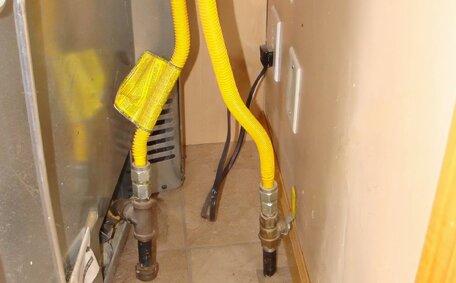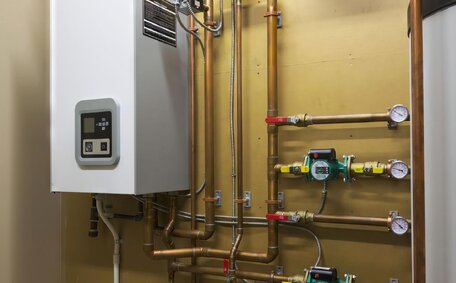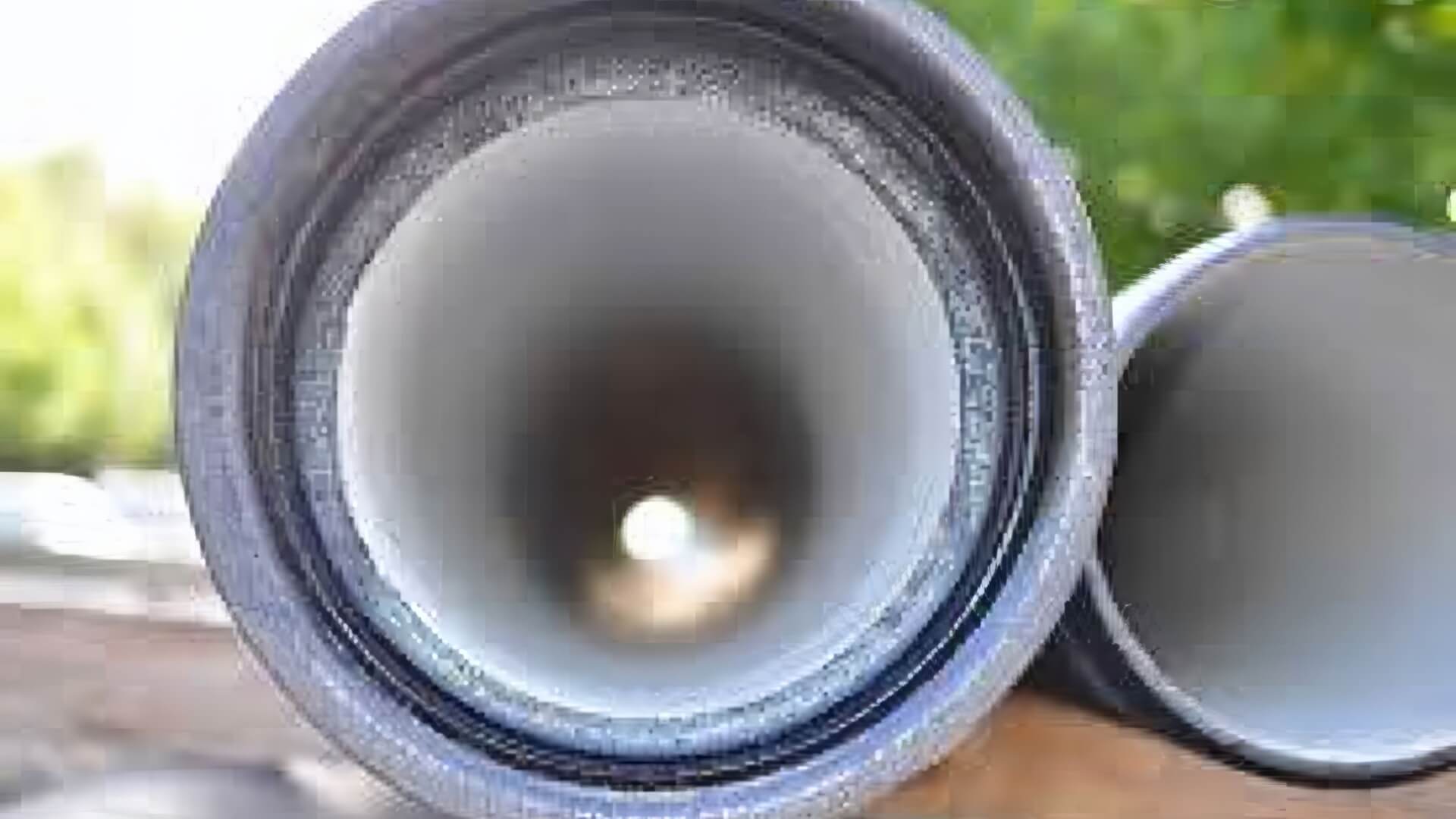
Keep Updated on Gas Appliance Recalls
Consumers should maintain awareness of current gas appliance recalls and safety alerts to prevent injuries. Check recall lists regularly to protect your home and family.
Read MoreTree roots are one of the leading causes of blocked drains and plumbing issues across Australia. As trees mature, their root systems expand searching for water and nutrients. Given the chance, these roots will eagerly grow into cracks and joints of underground sewer and drainage pipes that run through your property.
Once inside these pipes, which are commonly made of ceramic, PVC or other materials, the roots will continue to spread causing major drainage problems. Small hair-like rootlets penetrate pipe joints while larger woody roots gradually obstruct entire pipes once they take hold.
Left unchecked, invasive tree roots can lead to complete sewer line blockages, backflow of wastewater into your home, and contamination of soil and groundwater. Slow drains, gurgling sounds, sewage overflows and foul odours are all common signs of root intrusion.
In this comprehensive guide, we’ll discuss why tree roots are attracted to pipes, how to detect root-related drainage issues, potential long-term complications, and the best options for removing tree roots from your plumbing system to restore free flow.
Tree roots are instinctively attracted to pipes for two main reasons - water and nutrients. A tree’s extensive root system is programmed to seek out and absorb any available water to sustain its growth and health. Underground sewer and stormwater pipes provide an ideal source of moisture that roots readily gravitate towards.
On the exterior surface of drainage pipes, condensation frequently forms from temperature changes, creating a moist microclimate. Tree roots have sensory cells that can detect this moisture, enticing them to follow the pipe in search of water. Hot and arid weather during summer growing seasons exacerbates this effect, as roots aggressively seek hydration.
Nutrients like nitrogen and phosphorus found in wastewater are another magnet for opportunistic tree roots. Sewer pipes transport a virtual buffet of fertilising minerals that stimulate root growth. As roots extract nutrients, they proliferate and occupy more pipe space in a vicious cycle.
Once inside a drainage pipe, roots anchor and leverage the protected environment to expand relatively unhindered by competition from other plants. With a constant moisture supply and nutrient-rich interior, pipes present an ideal environment for dense root masses to form and cause major blockages over time.
Tree roots can infiltrate pipes in a few different ways. The smallest rootlets and hairy feeder roots easily penetrate joints between pipe sections, cracks, and loose fittings. Over time, these small roots expand and loosen pipe joints as they grow larger in diameter.
Larger woody roots are often drawn to the heat generated by hot water flowing through drain pipes. These thicker roots will wrap around the pipe, constricting water flow. The immense strength of a maturing root mass can even crush and collapse piping by exerting thousands of pounds of pressure.
Unrestricted intrusion and proliferation of roots within sewer drain pipes, leads to major blockages and obstructions. The interior diameter of the pipe work becomes increasingly occupied, impeding wastewater drainage. Excessive root masses may fully plug the pipe cavity, causing a complete blockage.
Root invasion also damages the structural integrity of pipes through distortion, displacement and fractures. Cracked pipes then provide new entry points for additional roots, further exacerbating the issue in a vicious cycle. Left unchecked, expanding root growth will continue choking pipes until the plumbing system fails completely.
There are several clear signs indicating your drains are blocked by invasive tree roots. Here are the main symptoms to watch out for:
If you suspect a tree root mass has invaded your plumbing, take action quickly. Over time, the issue will only get worse as roots grow denser. Our professional drain specialists have the equipment and expertise to clear your pipes and prevent future root regrowth.
Don’t hesitate to contact us if you notice any of the above signs. We can inspect your drains and recommend the best remedy to stop roots in their tracks before serious damage occurs.
p>p>p>p>p>p>p>p>p>p>p>p>p>p>p>p>p>
When tree roots have damaged pipes or caused recurrent blockages, temporary drain cleaning is not sufficient. Professional repair solutions that address the root cause are required. There are three main options:
This is the most effective way to remove existing root masses and restore flow. Specialist hydro jetting equipment blasts water at up to 4000 PSI to scour the full pipe interior. Roots and debris are flushed away, with no need for excavation.
For the best results, we use advanced CCTV drain cameras to locate all entry points before strategically jetting. This ensures even the smallest rootlets protruding from joints are eliminated.
Once roots are cleared, epoxy pipe relining creates a protective barrier coating inside pipes. This prevents future root regrowth and infiltration permanently. The process involves blowing in a resin-soaked liner which hardens to form a smooth, jointless interior.
Relined pipes are restored to full flow capacity and reinforced to withstand root pressure without cracking. An affordable and trenchless solution lasting decades.
For pipes that are severely damaged, a full replacement by excavation may be required. We can reroute pipes away from problem trees. Pipes are replaced with root-resistant PVC to inhibit regrowth.
In cases where tree removal is needed, we can provide professional arborist services. Tree root issues often require a combined mechanical and biological approach.
Don’t let invasive roots cause ongoing headaches. Our comprehensive service and expertise takes care of roots and repairs damage for good. Call us today for an obligation-free discussion of your options.
When it comes to preventing future problems with tree roots blocking drains, there are a few key preventive measures homeowners can take:
Ideally, trees should be planted at least 3 metres away from underground sewer drainage pipes. This provides a buffer zone where root systems are less likely to encounter and invade pipes.
For existing trees near sewer lines, speak to an arborist about options to prune and redirect aggressive roots away from your plumbing. Severing problem roots can also be effective.
Root barrier products can be installed around drainage pipes when planting new trees nearby. These impede root growth through physical or chemical means.
One option is to wrap pipes in a root-deflexion fabric sleeve. Chemical herbicide-infused barriers are also available but must be professionally installed.
Plastic PVC and concrete pipes are more susceptible to root invasion than cast iron. Ensure any replacements use materials that withstand root pressure.
Regular drain inspections and pipe maintenance helps detect potential root issues early. Annual CCTV inspections and hydro jetting can nip problems in the bud.
Keep drains free-flowing by avoiding putting fats, oils and food waste down sinks. Flushing pipes prevents roots taking hold.
Stay vigilant for signs of roots like slowing drains. Address problems promptly to limit damage. Prevention is much easier than removing established root masses.
With some sensible precautions, you can avoid destructive and costly root damage to pipes. Contact our specialists for professional advice tailored to your property.
p>p>p>p>p>p>p>p>p>p>p>
Consumers should maintain awareness of current gas appliance recalls and safety alerts to prevent injuries. Check recall lists regularly to protect your home and family.
Read MoreHard water leaves mineral deposits in hot water heaters and systems, causing corrosion and limescale buildup. This reduces efficiency and leads to higher energy bills and repair costs over time. Installing a water softener protects hot water appliances by removing the minerals that cause scale.
Read MoreYes, pipes can be relined more than once if they become damaged again. Our pipe relining service uses epoxy resin to coat the inside of your existing pipes, repairing cracks and damage for over 50 years. As experts, we’ll have your pipes relined in just one day with no digging required.
Read MoreWerrington, 2747 NSW
We will call back as soon as possible.




